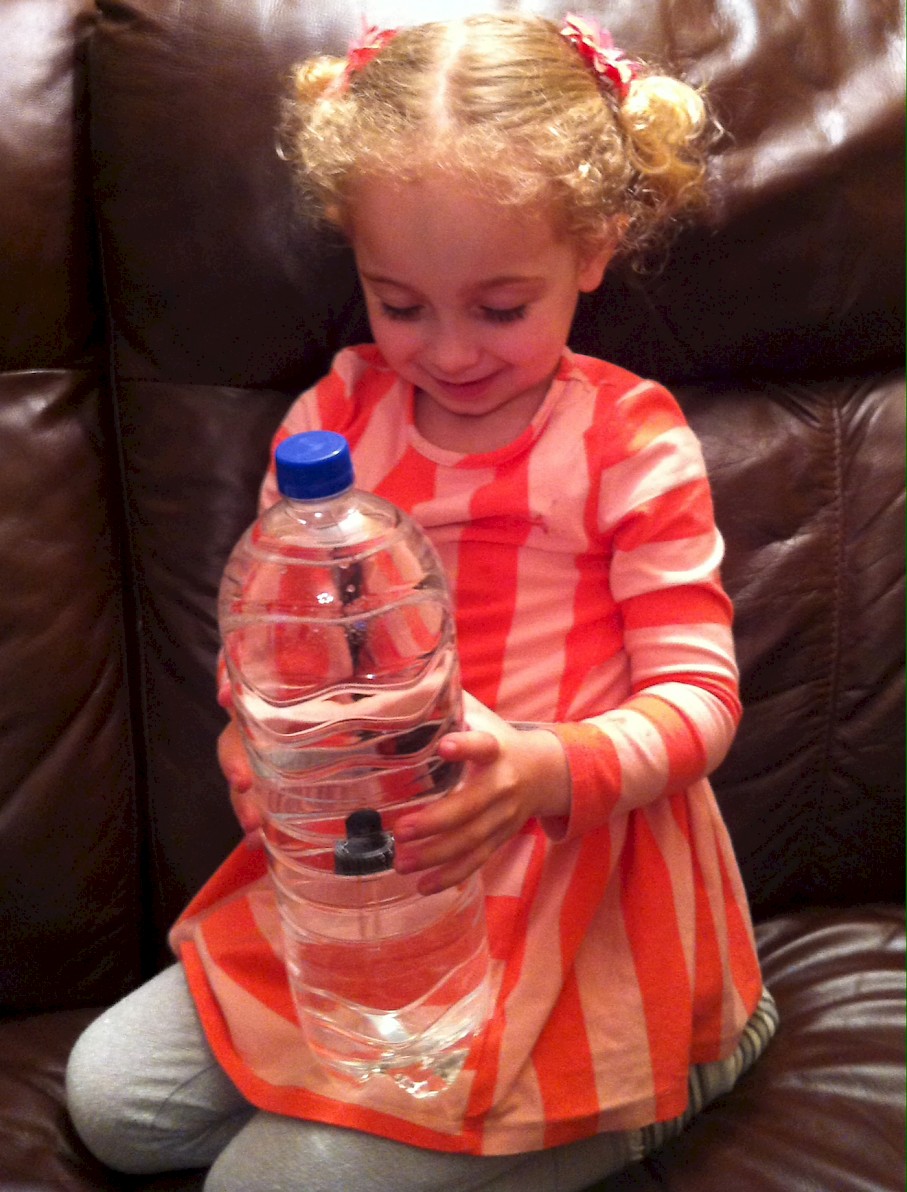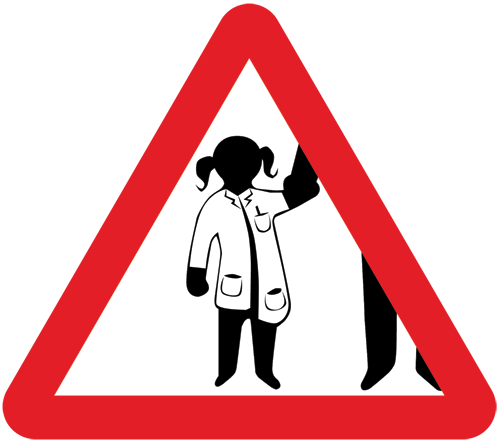Bottle Diver

Bobbing along, bobbing along at the bottom of the beautiful briny... Bottle? In this experiment we learn about bouyancy and pressure with a Cartesian diver!
Experiment
- Fill the bottle nearly to the top with cold water.
- If you're using a medicine dropper, place it into the water and squeeze the bulb to get some air out. It should just about float at the surface without sinking.
- If you're using a drinking straw, cut it to about 5cm (2") and seal one end with a blob of plasticine, with a larger blob forming an open ring at the other end which will be the bottom. Again it should just about float at the surface without sinking.
- Top up the water to the brim, and put the cap on tight.
- Give the bottle a squeeze - what happens?
- What happens when you let go again?
Can you make the bottle diver float in the middle of the bottle? It's a bit tricky!
So what's happening?
When you squeeze the bottle you increase the internal pressure, and this squeezes on the air bubble inside the diver more than it squeezes on the water. When the air inside the diver is squeezed into a smaller space, water takes up room where some of the air was, the diver becomes less buoyant, so it sinks.
When you let go again, the air inside the diver expands again and pushes the water out and the diver becomes positively buoyant, so it floats back to the top! Cool, huh?
The toy we've made in this classic experiment is also known as a Cartesian diver after René Descartes, who is thought to have invented the toy.
What if?
What would happen if you:
- Dissolve a tablespoon of salt into the water?
- Used warm water instead of cold?
- Filled the bottle only halfway with water?
